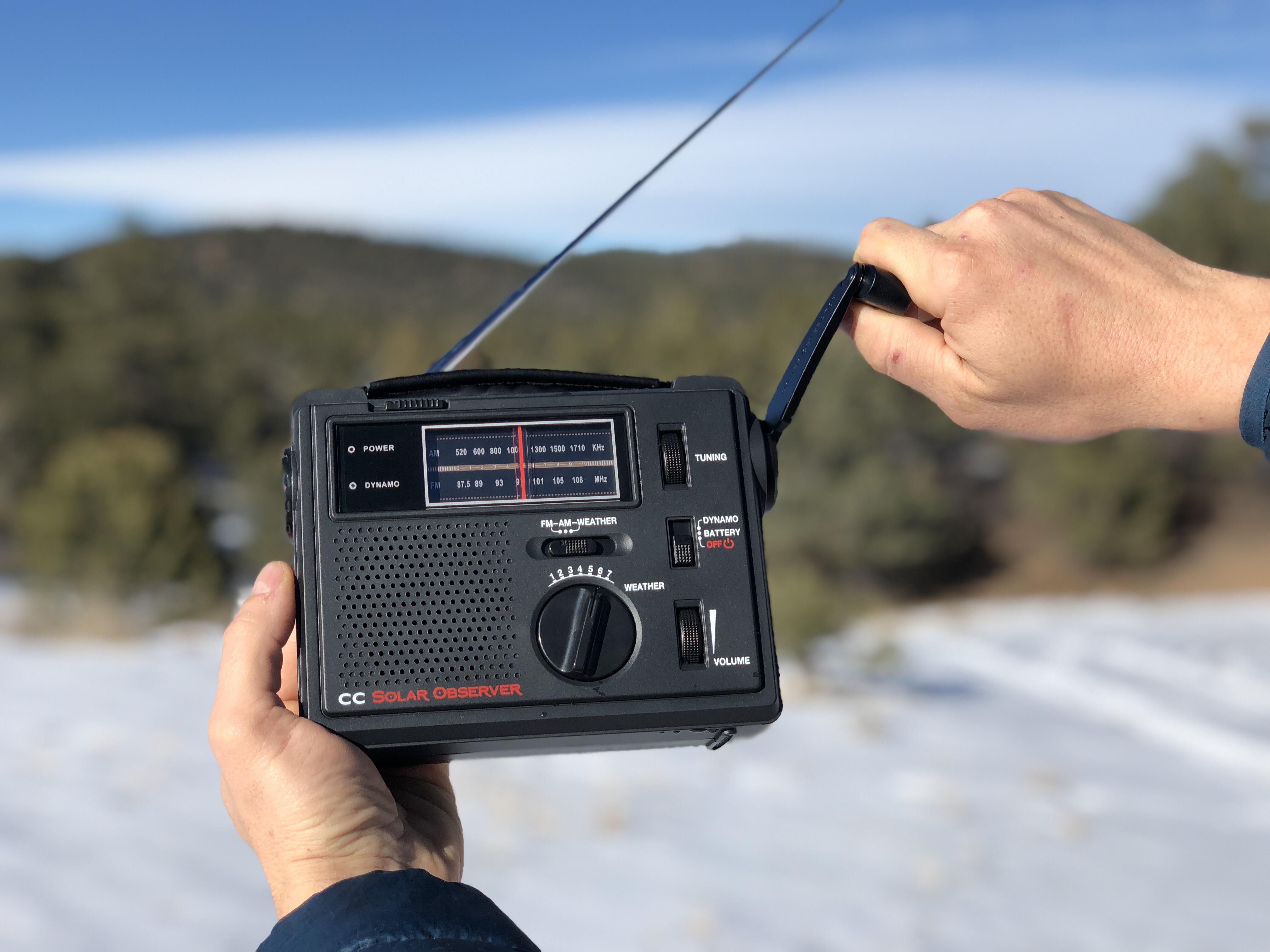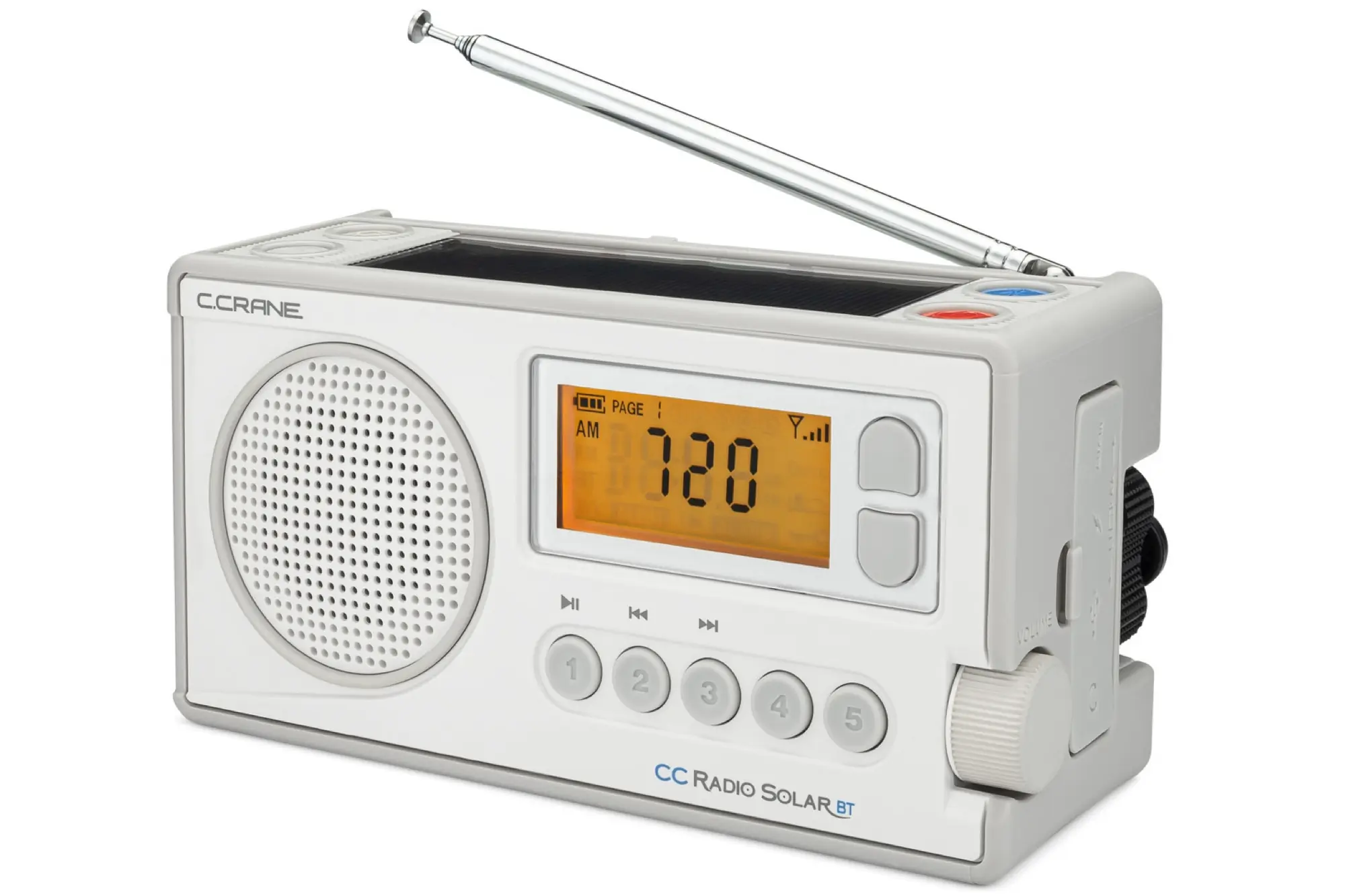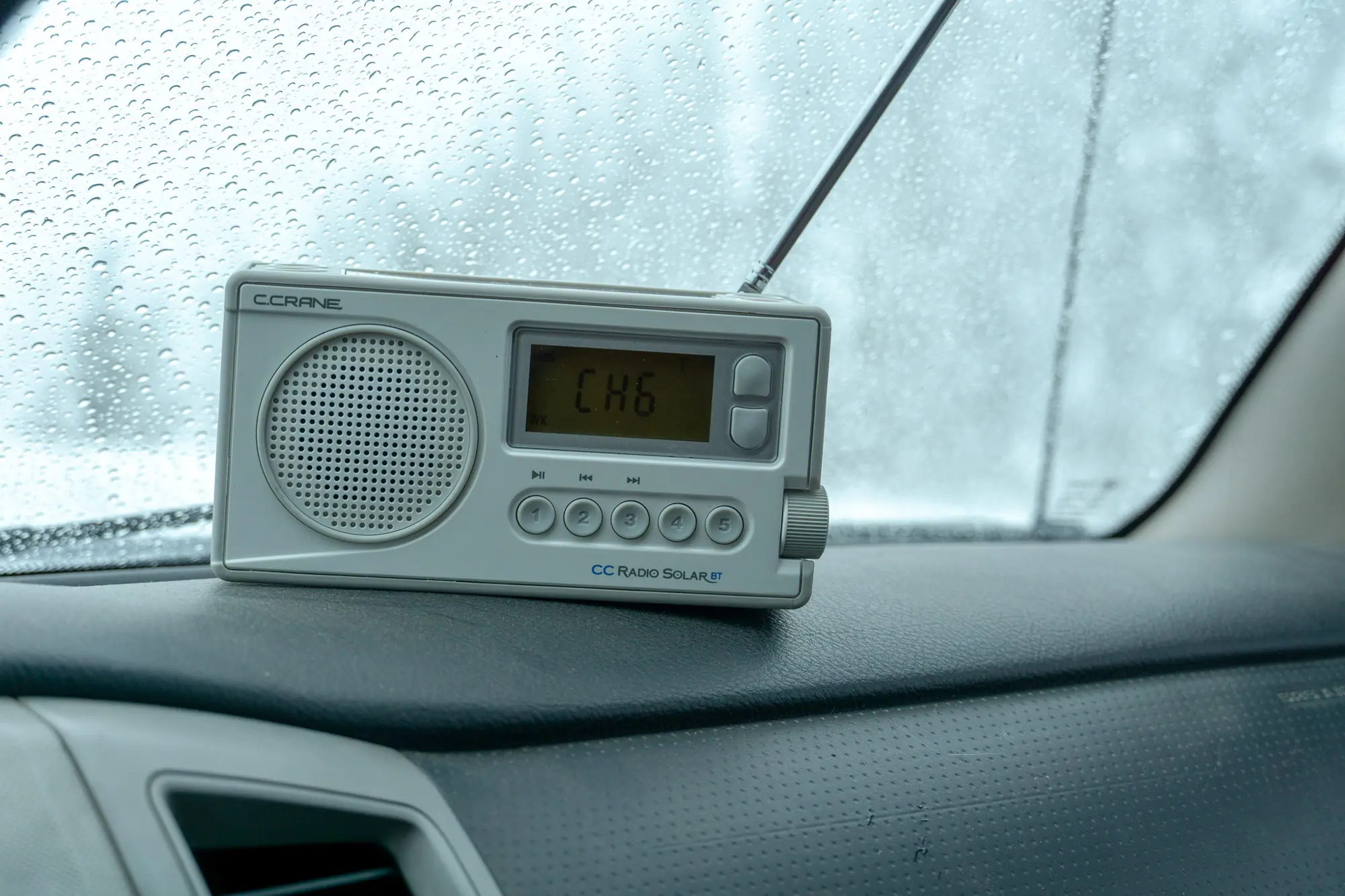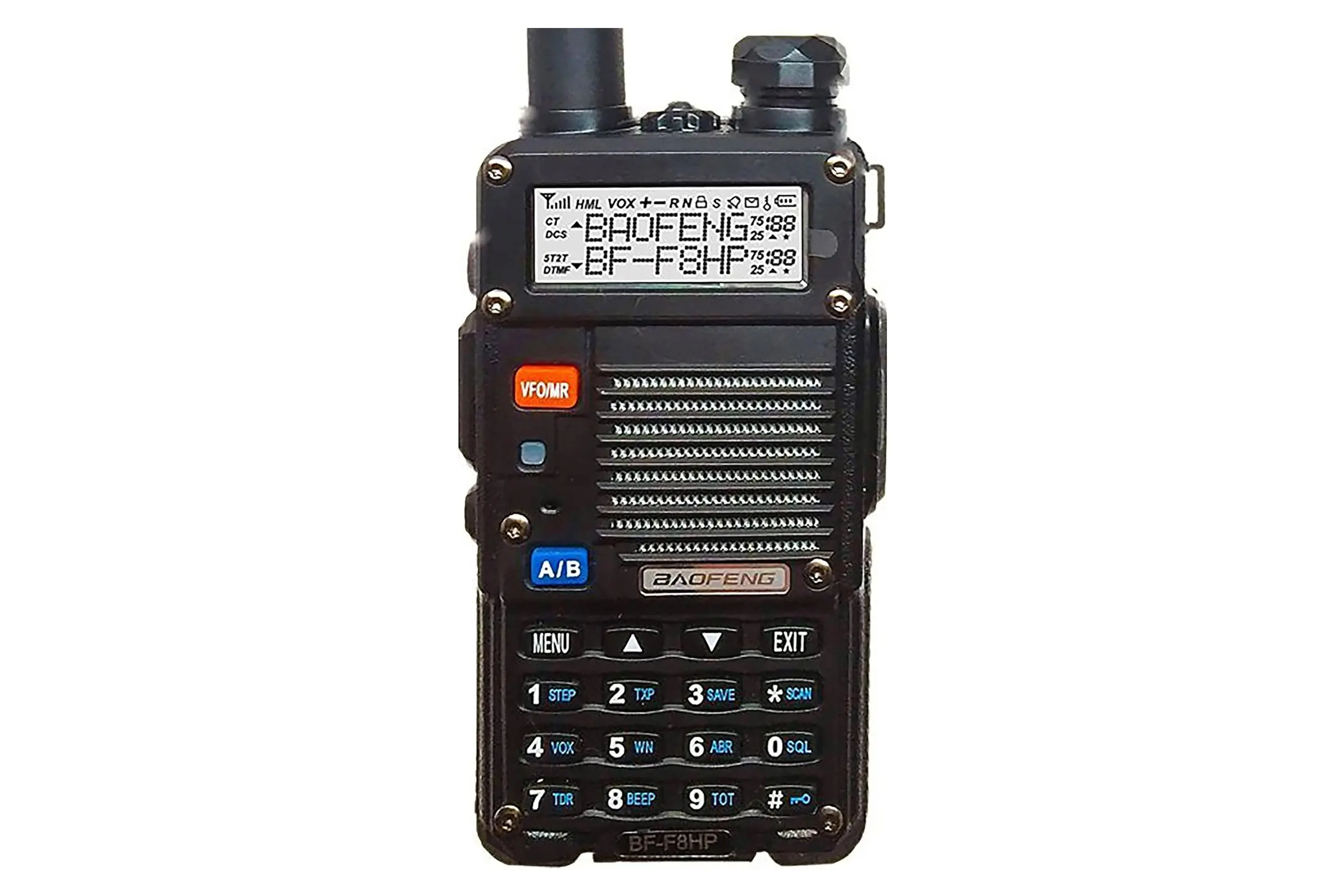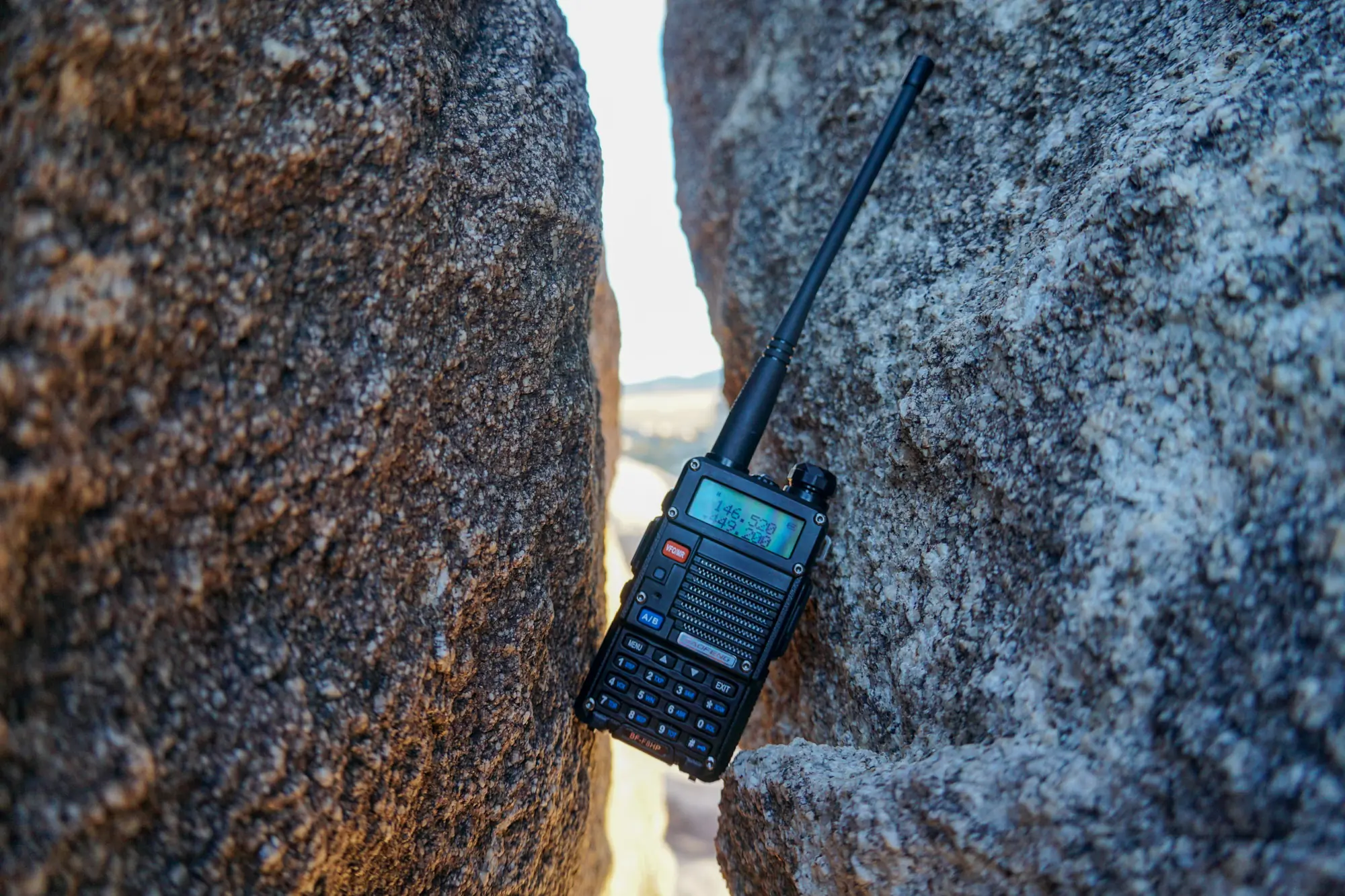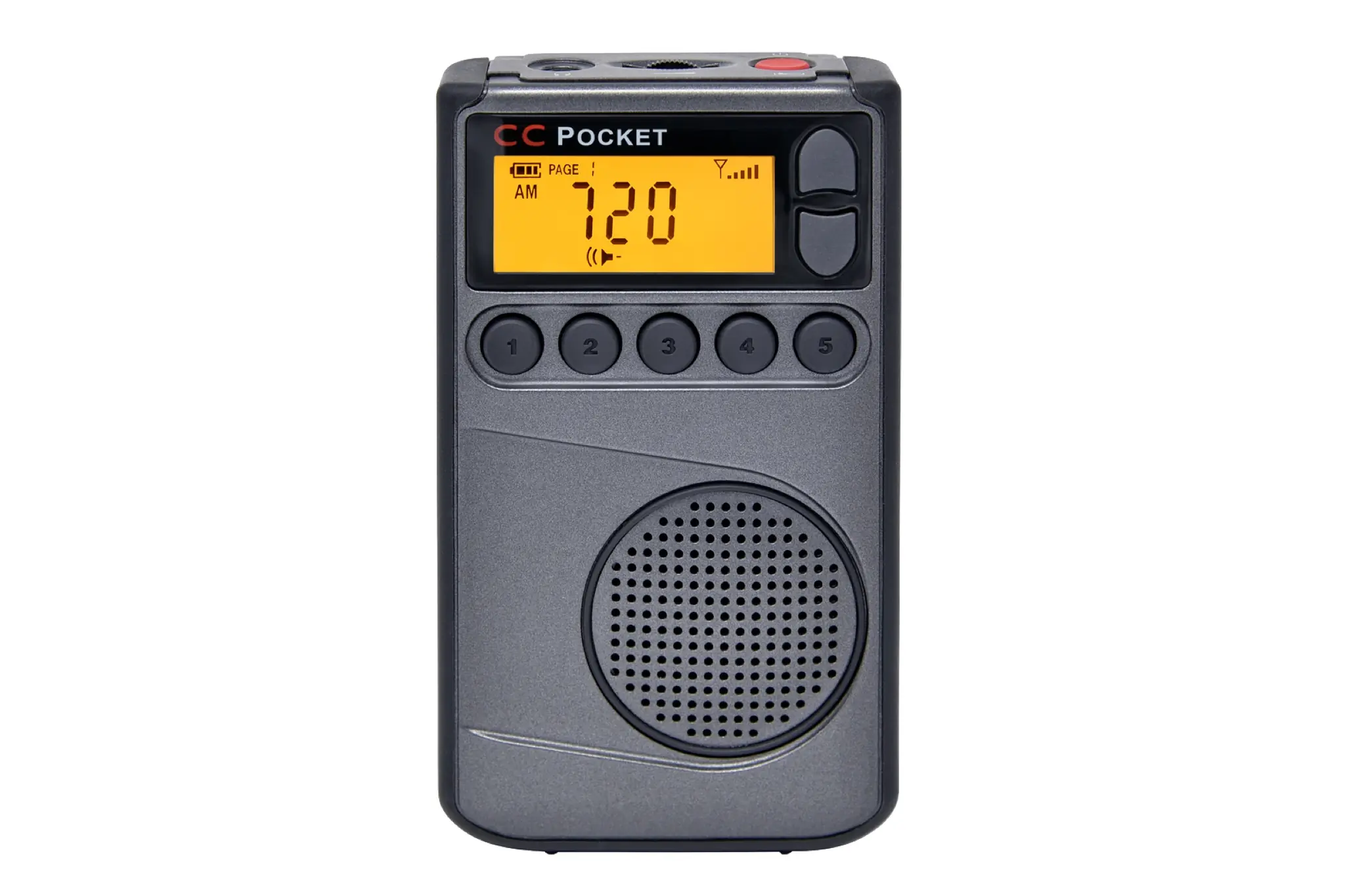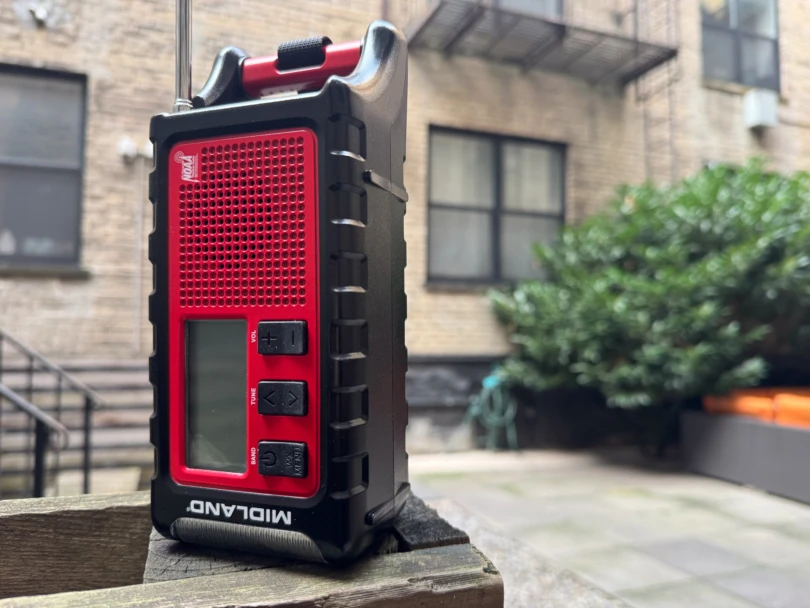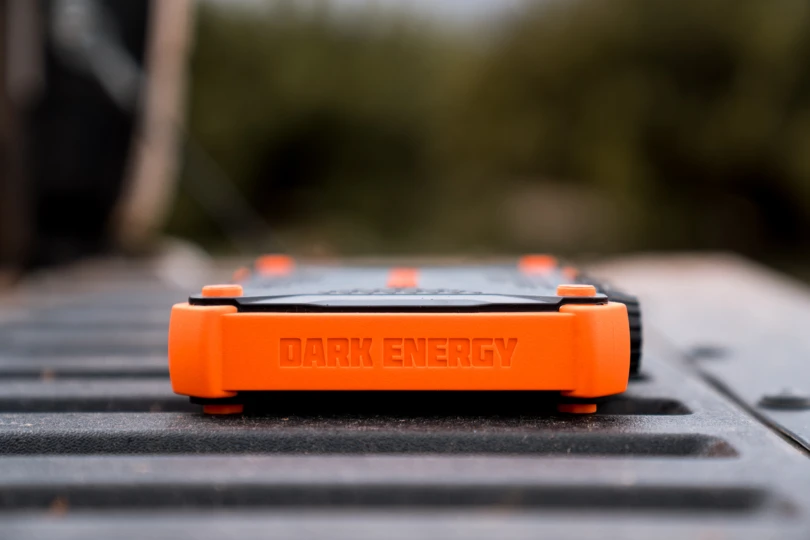From the storm cellar to the mountains, I carefully researched and tested the best emergency radios to find the perfect options for your bugout bag or severe weather kit. Knowing what’s coming is essential to emergency preparedness, and I’ve tested close to 25 of these receivers to find the top 12 available today.
There’s a wide range of radios available, from top picks like the Midland ER210 to more budget-friendly options like the RunningSnail Weather Radio, and I covered the spread in my testing. From timing battery lives to challenging NOAA weather reception from fire lookouts, I dug into the details to understand these radios. Check out my top selections below.
Editor’s Note: We updated our Emergency Radios guide on August 21, 2025, to add new rating attributes to every radio we’ve tested. These attributes allow you to compare the radios side-by-side and better decide which is best for you.
The Best Emergency Radios of 2025
Midland ER210 E+READY Compact Emergency Crank WX Radio
-
Weather Reception
8.0
-
Emergency Functions
9.0
-
Battery Life
7.0
-
Weight & Size
8.0
- Weight: 15 oz.
- Power Source: Rechargeable 2,600 mAh battery pack, solar, hand crank
- Radio Receiver: Digital
- Band Reception: AM/FM and NOAA weather
- Size: 7.5 in. x 5.25in. x 2 in.
- Warning Siren: Yes
Pros
- Compact size fits in your hand
- Good sized 2,600 mAh rechargeable battery
- Receives entire AM and FM bands well
- Bright 1,400 lux flashlight with SOS beacon
Cons
- No dog whistle like its bigger brother, the ER310
- No Bluetooth connectivity
- Lacks S.A.M.E. localized reception
RunningSnail Solar Crank NOAA Weather Radio
-
Weather Reception
7.0
-
Emergency Functions
7.0
-
Battery Life
8.0
-
Weight & Size
6.0
- Weight: 11 oz.
- Power Source: AAA batteries, rechargeable 4,000 mAh battery pack, solar, hand crank
- Radio Receiver: Analog
- Band Reception: AM/FM and NOAA weather
- Size: 6.2 in. x 2.1 in. x 2.9 in.
- Warning Siren: Yes
Pros
- Budget price
- Large 4,000 mAh rechargeable battery
- 18-month warranty
- 3-mode flashlight
Cons
- Slow solar panel charging
- Generally cheaper build quality
- Micro-USB charge-in is getting dated
Kaito KA500 Voyager Emergency Radio
-
Weather Reception
7.0
-
Emergency Functions
7.0
-
Battery Life
6.0
-
Weight & Size
6.0
- Weight: 1 lb., 6.4 oz.
- Power Source: AA batteries, rechargeable 600 mAh battery pack, solar, hand crank
- Radio Receiver: Analog
- Band Reception: AM/FM, NOAA weather, and shortwave
- Size: 8.8 in. x 5.8 in. x 2.8 in.
- Warning Siren: Yes
Pros
- Charges from Micro-USB, AC wall charger, solar panel, hand crank, or swapped-in AA batteries
- Rugged, over-molded rubber bumpers and ABS plastic shell
- Shortwave radio reception makes this is global-listening unit
Cons
- Small battery — testers reported that smartphones charged to about 75%
- One of the heavier options at 1.5 pounds
- Hand crank isn't the easiest to use
Midland ER310 E+READY Emergency Crank Weather Radio
-
Weather Reception
8.0
-
Emergency Functions
8.0
-
Battery Life
7.0
-
Weight & Size
6.0
- Weight: 1 lb.
- Power Source: AA batteries, rechargeable 2,600 mAh battery pack, solar, hand crank
- Radio Receiver: Digital
- Band Reception: AM/FM, NOAA weather
- Size: 8 in. x 2.4 in. x 3.4 in.
- Warning Siren: Yes
Pros
- 2,600 mAh rechargeable battery is good-sized
- Ultrasonic dog whistle could assist SAR efforts
- Digital radio receiver
- CREE LED lights
Cons
- No reading lamp
- Not waterproof
- Fairly large radio
C.Crane CCRadio Solar BT
-
Weather Reception
8.0
-
Emergency Functions
6.0
-
Battery Life
8.0
-
Weight & Size
8.0
- Weight: 1 lb., 2.2 oz.
- Power source: Rechargeable 3,400 mAh 18650 battery, solar, hand crank, and AA batteries
- Radio receiver: Digital
- Band reception: AM/FM and NOAA weather
- Size: 6 in. x 3 in. x 2.5 in.
- Warning siren: No
Pros
- Versatile look and functionality that can be used every day
- Bluetooth speaker connectivity
- 18650 rechargeable cell has many other uses outside the radio
- Loud speaker and clear audio
Cons
- Doesn't sport some of the more emergency-focused features, such as a warning siren or strobe light
- Battery door is a little tough to get off
Baofeng BF-F8HP Radio
-
Weather Reception
8.0
-
Emergency Functions
5.0
-
Battery Life
7.0
-
Weight & Size
7.0
- Weight: 10.1 oz.
- Power Source: Li-Ion 2,000 mAh rechargeable battery pack
- Radio Receiver: Digital
- Band Reception: 2M, 70CM amateur radio, AM/FM, NOAA weather, marine VHF
- Size: 10.5 in. x 2 in. x 2 in.
- Warning Siren: Yes
Pros
- Monitors a broad range of emergency frequencies, including many outside of other radios
- Ability to be powered by Li-ion rechargeable battery or AA cells
- Flashlight and alarm mode rounds out emergency functionality
- Can use different antennas
Cons
- Requires technical know-how to program
- Unlicensed operators cannot transmit
- No NOAA weather alert function
C.Crane WX Pocket Radio
-
Weather Reception
8.0
-
Emergency Functions
5.0
-
Battery Life
7.0
-
Weight & Size
9.0
- Weight: 3.8 oz.
- Power Source: 2x AA batteries
- Radio Receiver: Digital
- Band Reception: AM/FM and NOAA weather
- Size: 2.5" x 4.2" x 1"
- Warning Siren: No
Pros
- Very compact emergency radio that really can fit in a pocket
- NOAA Weather alerts built in
- Nice fit and finish with rubber protected bumpers
- Runs on easy to source AA batteries
Cons
- No real emergency functionality built in
- Separate antenna wire is easy to lose
Other Emergency Radios We Trust
The selection of radios above are all solid operators, and I’d lean on any of them to keep myself in the loop when it counts. I’ve also tried pretty much every emergency radio on the market, and a few stood out as great alternatives. Take a look at my impressions before you make your choice.
-
Weather Reception
8.0
-
Emergency Functions
8.0
-
Battery Life
7.0
-
Weight & Size
6.0
- Weight: 1 lb., 6 oz.
- Power Source: 2,000 mAh rechargeable Li-Ion cells, alkaline batteries, hand crank, solar panel
- Radio Receiver: Digital
- Band Reception: AM/FM, NOAA weather, and shortwave
- Size: 8.25 in. x 3.5 in. x 2.3 in.
- Warning Siren: Yes
Pros
- Broad band reception
- Powered by multiple sources (Li-Ion cells, AAAs, solar, and crank)
- Rugged and splashproof design
- Bluetooth speaker functionality
Cons
- A little hefty
- SW frequency tuning doesn't go to third decimal
-
Weather Reception
7.0
-
Emergency Functions
6.0
-
Battery Life
9.0
-
Weight & Size
7.0
- Weight: 1 lb.
- Power Source: AC power adapter, and 3 AA batteries for emergency backup
- Radio Receiver: Digital
- Band Reception: AM/FM and NOAA weather
- Size: 6.1 in. x 5.3 in. x 2 in.
- Warning Siren: Yes
Pros
- Wall power and battery back up
- S.A.M.E. localized reception
- Trilingual display
- Loud weather alert tone
- Can be used with an external antenna for better reception
Cons
- No hand crank or solar charging ability
- No AM/FM radio reception
- Not very portable
-
Weather Reception
8.0
-
Emergency Functions
6.0
-
Battery Life
7.0
-
Weight & Size
7.0
- Weight: 5.5 oz.
- Power source: Two AA batteries
- Radio receiver: Digital
- Band reception: AM/FM, NOAA weather, shortwave, and aviation band
- Size: 4.75 in. x 1.1 in. x 3 in.
- Warning Siren: No
Pros
- Receives on a wide band range, including shortwave and aviation
- 70 hour battery life
- Less than 6 ounces
- Includes a carrying case
Cons
- Lack of emergency features
- No alternative power sources
- A bit pricey
-
Weather Reception
7.0
-
Emergency Functions
6.0
-
Battery Life
6.0
-
Weight & Size
7.0
- Weight: 11 oz.
- Power Source: AAA batteries, rechargeable 2,000 mAh battery pack, solar, hand crank
- Radio Receiver: Analog
- Band Reception: AM/FM and NOAA weather
- Size: 6.2 in. x 2.9 in. x 2.1 in.
- Warning Siren: No
Pros
- Lightweight and small profile
- IPX3 rating protects against splashes
- Receives full AM/FM and NOAA weather bands, with alerts
- Powered from four sources
Cons
- No emergency beacon or siren
- Solar panel isn't as efficient
-
Weather Reception
7.0
-
Emergency Functions
6.0
-
Battery Life
5.0
-
Weight & Size
7.0
- Weight: 11 oz.
- Power Source: Rechargeable 850 mAh battery pack, solar, hand crank
- Radio Receiver: Digital
- Band Reception: AM/FM and NOAA weather
- Size: 5.98 in. x 2.71 in. x 3.3 in.
- Warning Siren: Yes
Pros
- Tough and compact build
- Multi-function LED light
- Nice speaker tone
- Rubberized buttons
Cons
- Small 850 mAh battery
- Can't use disposable batteries
- Micro-USB charging output is pretty slow at 0.3 amps
Emergency Radio Comparison Chart
| Emergency Radio | Price | Weight | Power Source | Radio Receiver | Power Source |
|---|---|---|---|---|---|
| Midland ER210 E+READY | $50 | 15 oz. | Rechargeable 2,600 mAh battery pack, solar, hand crank | Digital | 7.5 in. x 5.25 in. x 2 in. |
| RunningSnail Solar Crank NOAA Weather Radio | $46 | 11 oz. | AAA batteries, 4,000 mAh rechargeable battery pack, solar, hand crank | Analog | 6.2 in. x 2.1 in. x 2.9 in. |
| Kaito KA500 Voyager Emergency Radio | $50 | 1 lb., 6.4 oz. | AA batteries, 600 mAh rechargeable battery pack, solar, hand crank | Analog | 8.82 in. x 5.79 in. x 2.83 in. |
| Midland ER310 E+READY | $70 | 1 lb. | AA batteries, 2,600 mAh rechargeable battery pack, solar, hand crank | Digital | 8 in. x 2.4 in. x 3.4 in. |
| C.Crane CCRadio Solar BT | $100 | 1 lb., 2.2 oz. | Rechargeable 3,400 mAh 18650 battery, solar, hand crank, and AA batteries | Digital | 6 in. x 3 in. x 2.5 in. |
| Baofeng BF-F8HP Radio | $63 | 10.1 oz. | Li-Ion 2,000 mAh rechargeable battery pack | Analog | 10.5 in. x 2 in. x 2 in. |
| C.Crane WX Pocket Radio | $75 | 3.8 oz. | 2x AA batteries | Digital | 2.5 in. x 4.2 in. x 1 in. |
| Eton Odyssey All Band Weather Radio | $80 | 1 lb., 6 oz. | 2,000 mAh rechargeable Li-Ion cells, alkaline batteries, hand crank, solar panel | Digital | 8.25 in. x 3.5 in. x 2.3 in. |
| Midland WR120 NOAA Weather Alert Radio | $40 | 1 lb. | AC power adapter, and 3 AA batteries for emergency backup | Digital | 6.1 in. x 5.3 in. x 2 in. |
| C.Crane Skywave 2 Pocket Radio | $80 | 5.5 oz. | Battery | Digital | 4.75 in. x 1.1 in. x 3 in. |
| FosPower Emergency Solar Hand Crank Radio | $40 | 11 oz. | AAA batteries, 2,000 mAh rechargeable battery pack, solar, hand crank | Analog | 6.2 in. x 2.9 in. x 2.1 in. |
| Sangean MMR-88 AM/FM | $70 | 11 oz. | 850 mAh rechargeable battery pack, solar, hand crank | Digital | 5.98 in. x 2.71 in. x 3.3 in. |
How We Tested the Best Emergency Radios
At GearJunkie, we take every aspect of the gear seriously, from the specs on an emergency radio to just how well it works in real-life situations. Testing roughly two dozen emergency radios required getting outside the range of urban or suburban life to see how well that solar charge really worked (or just how tough it was to use that crank charger).
Dealing with outdoor gear on a constant basis, we know that an emergency radio needs to have essential features, but it also needs to work when called upon. We went to the internet for a deep dive into the research and narrowed down the best for head-to-head testing.
Our Testing Process and Testing Grounds
This real-life, hands-on testing involved various testers in differing situations that forced the radios to perform (that glow-in-the-dark function may not be the most necessary item, but it sure was handy in the middle of the night). I considered a number of factors, including run time, charging capability, durability, and more.
Reception was specifically tested in a more rigorous manner. I hiked to local fire lookout towers in the North Cascades and attempted to receive NOAA weather station frequencies with these radios head-to-head. This gave good insight into relative build quality and a good understanding of the differences between digital and analog radio receivers.

To test the ability of these radios to receive NOAA weather alerts, I tuned into the weekly alert test and gauged the reception. Both solar and hand-cranking methods were challenged, too, with the corresponding run times compared. Relative features such as flashlight brightness and the volume and clarity of their speakers were also tested, and notes were compared.
Capturing the mix of data from real-world and bench testing allowed us to crown winners and the best of the rest, all designed to help you pick out the best emergency radio for your needs.
Our Expert Testers
I, Nick Belcaster, am a licensed ham radio operator and have been putzing around with radios for a good many years here. To test emergency radios, I incorporate them into my daily routine, running some in my truck emergency kit and some on the cabin site I’m clearing just south of Mt. Rainier. I’m also the leg power behind our reception test and use my experience as a gear tester to ensure no facet of these radios is overlooked.
Our Emergency Radio Rating System
I’ve settled on four different ratings for these emergency radios, which I believe give the best impression of their capabilities and will allow you to compare and contrast them based on your needs.
Weather Reception
Receiving good NOAA weather radio transmissions is one of the most important things your emergency radio will do, and I rate it the highest when comparing them. I look for good reception of the closest transmission to my testing location, as well as the second and third closest. Reception of radio bands such as shortwave and AM/FM radio also yields a higher rating.
Emergency Functions
As emergency radios, these units should add a few functions for when the power goes out, such as flashlights, sirens, or alternative charging abilities. I rate units the highest when they sport the full complement and look for advanced functionality built in, such as SOS flashing modes or ultrasonic dog whistles.
Battery Life
Battery size above 2,500 mAh earns the highest ratings in this attribute, while radios below 1,000 mAh earn the lowest. This score also considers how efficiently a radio runs on the battery it has, with some options earning higher scores for having low power consumption modes.
Weight & Size
Finally, the weight and size of any emergency radio should be considered, but they aren’t the most important, and these ratings are weighed less than the others. Compact units are nicer to carry around and store, and are rated higher than bulky units.
Buyer’s Guide: How to Choose the Best Emergency Radio
Reception and Ability to Receive NOAA Alerts
The most basic function of an emergency radio is to keep you informed. It’s vital that your radio can pick up AM/FM radio stations and NOAA weather stations. Most emergency radios do this, but make sure to find one that provides solid reception. Look for a radio with a telescoping antenna to better pick up radio waves.
Analog Radio Receivers
Analog radio has existed since the early 1900s and operates by transmitting sound waves over the radio frequency band. The signals can differ in their modulation (which gives us AM and FM radio) but are transmitted and received in the same way. The technology is fairly simple, and because of this, it can be produced cheaply and widely.
Analog radio has, however, reached the technological ceiling in terms of new advances. It is also vulnerable to disruption by interference, the signal quality can be degraded by other electronics, weather, or other operators. Because of this, digital radio receivers are now the standard among emergency weather radios.
Digital Radio Receivers
Digital radio is the wave of the future, and nearly all new emergency radios today are made with digital receiver chips. Digital radio transmitters take sound and process it into digital information, which is then transmitted more easily over long distances and at a much higher fidelity than traditional analog. Digital receivers take the information and reassemble it instantly, playing it with near-zero latency.
The downside to digital is that when the signal gets too degraded, you lose it completely, which can lead to breaks in communication. You’ll also pay a bit more for an emergency radio with a digital receiver in it, but for the quality, we believe the price is well worth it.

Charging Methods
In an emergency, there’s no guarantee the power will stay on (it’ll likely go out). So, make sure your radio has multiple charging options. The easiest and fastest way to get a full recharge is to replace the battery.
We like radios that allow users to use disposable batteries. This allows users to easily stock up and get several days of power without much financial investment.
Solar charging is useful, but it can be slow and only works if the sun is out. During severe weather, this can be a problem. That’s why another charging method — like a hand crank — is essential.
All hand cranks aren’t created equal, so take note of how much power you can get per crank. When turning the crank of the Eton Odyssey All Band Weather Radio was noticeably firmer than the cranks of other radios, indicating a larger generator inside. Look for a radio that will give you a good ratio of cranking to listening time, like 10 minutes of listening per one minute of cranking.

Battery Life
With all of that said, the longer the battery lasts, the less likely you’ll have to crank away to keep it going. Batteries on the bigger end for emergency radios tend to be around 2,000-2,600 mAh, which should give you a full day of use before you need to recharge.
Smaller and lighter radios will have 850-1,000 mAh, which, when used sparingly, will provide enough for shorter emergencies or camping trips.
Extra Features
Features on emergency radios range widely from emergency buzzers and SOS signaling to table lamps, LED flashlights, and USB charging. Most radios have a USB output to charge your small electronic devices. A larger battery (for example, 2,000 mAh) will give you half to a full charge. If keeping your phone charged is a priority, opt for a larger battery.
Emergency features are paramount with these radios, so look for a radio that can be set to alert you when NOAA issues severe weather alerts. If you find yourself in an emergency, a good flashlight comes standard with most radios.
Also, look for features that will help people find you if you’re trapped in your house by a flood or lost in the woods. Blinking red LED lights or flashlights with blinking or SOS signal functions are great options, as are an audible alarm, buzzer, or ultrasonic dog whistle, which can help search teams zero in on your location.

Durability & Waterproofness
Emergency situations are usually messy, so you’ll likely end up dropping your radio or getting it wet in inclement weather. Look for a radio that’s built with sturdy materials, or has impact-resistant rubber skin or bumpers, such as our chosen Most Durable radio, the Kaito KA500 Voyager Emergency Radio.
Also, learn about the IPX rating system, which rates how waterproof a device is. It ranges from breaking down after any water exposure (IPX0) to being able to withstand powerful water jets (IPX9K).
The majority of radios that we’ve found were in the range of IPX3 (able to withstand light rain) and IPX4 (able to withstand splashes from any direction).
Weather Band Radio vs. Weather Alert Radio
To get the most active, up-to-date weather information, you need to use a weather alert radio. A weather alert radio will automatically receive an emergency message and give you an alert, whether you have the radio on or not. For a weather band radio, you must have the radio on and tuned to the local weather station to receive any alerts.

How Do NOAA Weather Alerts Work?
NOAA Weather Radio is a nationwide network of radio stations broadcasting continuous weather information directly from National Weather Service offices across the country. The broadcasts can include basic forecasts and current weather observations, as well as warnings, watches, and hazard information. They operate 24 hours a day.
When an alert is needed, NOAA can send a tone at a level of 1,050 Hz that sets off an alarm on weather radio receivers designed with a tone alert feature. This enables the listener to find out about the impending hazard immediately.
S.A.M.E. Localized Reception
While many emergency radios integrate a tone alert feature, these are often general alerts that are issued broadly across the 40-mile transmit range of weather radio transmitters. Specific Area Message Encoding, or S.A.M.E., is a technology that transmits a digital code along with the alert that corresponds to a specific county.
In this way, S.A.M.E.-equipped radios can screen out alerts for areas that don’t affect you. This can be greatly beneficial for radios that typically stay in one location, such as the Midland WR120.
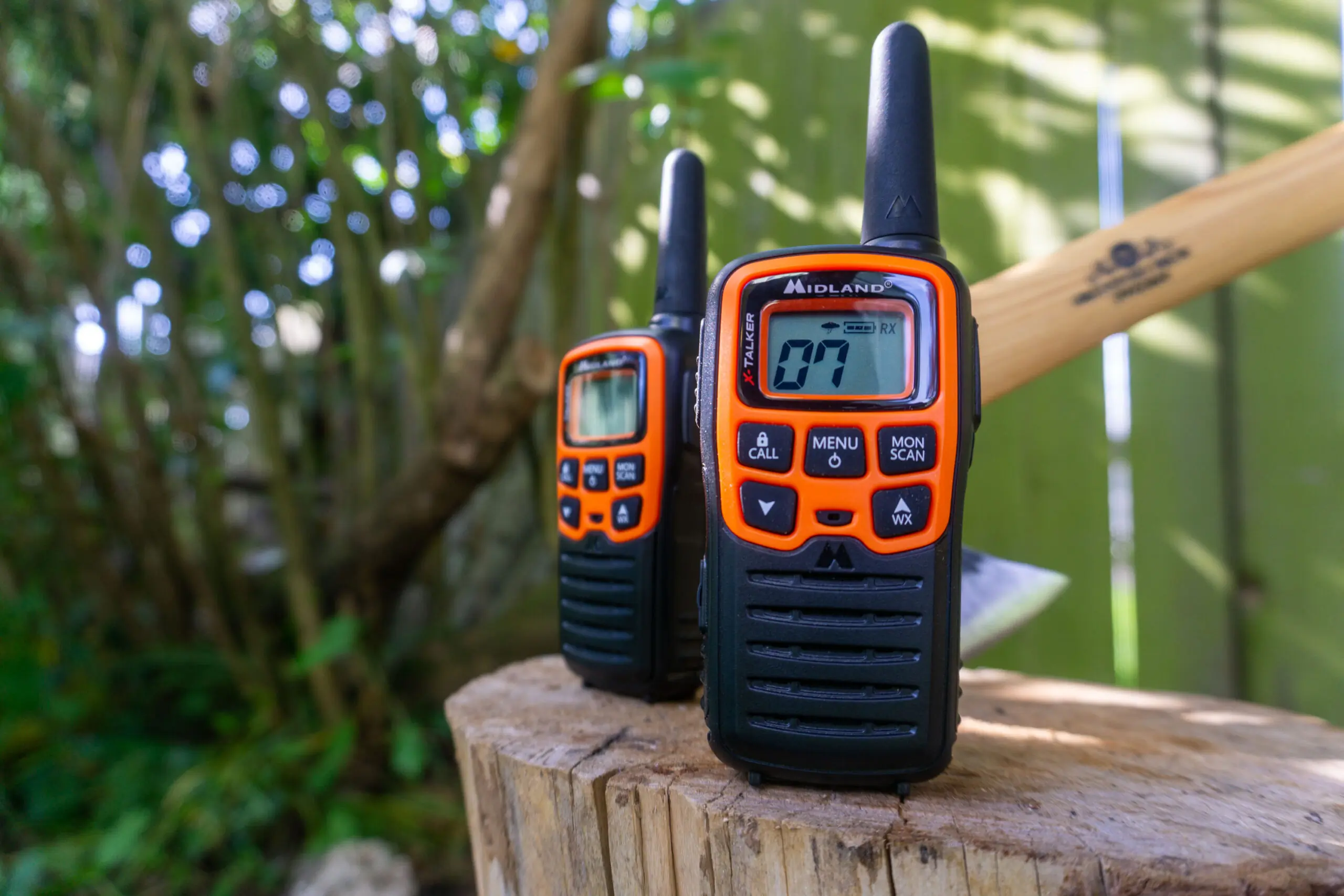
Shortwave Radio
Shortwave radio, simply, is a band of frequencies outside of the medium and long wave frequencies that host AM radio and the wideband VHF frequencies that broadcast FM radio. Radio waves within these shortwave frequencies can be reflected across a layer of the atmosphere called the ionosphere, which gives them over-the-horizon transmission abilities.
Because these frequencies can be transmitted worldwide, international broadcasting services have utilized them to transmit news to the entire world. One notable example is the BBC World Service, which broadcasts 24 hours a day and shares news with eight regional locales across the planet. In an emergency situation, shortwave radio reception can allow you to receive news from around the world.
In our testing, the only radios capable of receiving shortwave radio were the C.Crane Skywave 2 Pocket Radio, Kaito KA500 Voyager, and Eton Odyssey All Band Weather Radio.
What Is the EAS System?
The Emergency Alert System (EAS) is a national public warning system that requires radio and TV broadcasters, cable TV, wireless cable systems, and satellite and wireline operators to provide the public with information in an emergency.
EAS messages will interrupt regular programming. FEMA, in partnership with the Federal Communications Commission and NOAA, is responsible for implementing, maintaining, and operating the EAS at the federal level.
Emergency Preparedness Tips
In addition to having the right supplies, it’s important that they’re stored in an easily accessible location. Make sure you know how to use your radio before it’s ever needed. Also, keep an extra set of batteries on hand.
It’s a good idea to have a tote box or duffel bag ready with all needed emergency supplies. This includes a first aid kit, flashlight, bottled water, a water filter, and shelf-stable food.


Price & Value
Investing in being prepared is always a safe bet, but that doesn’t mean you need to splurge on the latest and greatest for your needs. Paying more for an emergency radio typically means paying for more features, and while some are worth it, there’s certainly a line. Consider how you’ll be using your radio to hone in on the price range you should pay for it.
Budget
As with most consumer electronics, there are plenty of budget options that don’t quite live up to the standard. We suggest paying at least $40 for an emergency radio, as this will limit your chance of getting a bunk unit. The RunningSnail Solar Crank Radio ($36) is the exception to the rule, as it was our best budget pick, and hits most of the marks we’re looking for.
At this price range, radios are more likely to have analog radio receivers, which are less precise than digital ones, and don’t have the ability to scan. These options will also typically have smaller batteries around the 600-1,000 mAh range, which means they won’t hold a charge as long in storage.
Mid-Tier
Paying a bit more can snag you a good number of additional features, like digital radio receivers, higher-quality solar cells, and wider band reception. For around $50-60, you can find radios like the Kaito KA500 Voyager that receive shortwave radio, which transmits around the world. These radios will also generally have better build quality, and bigger batteries of around 2,000 mAh.
The Midland ER210 ($50) is a great value at the price, and the radio has just about everything you’d need on an emergency radio. If you want just a bit more juice, bumping up to the Midland ER310 ($70) gets you a larger 2,600 mAh cell.
Premium
Paying more than $70 for an emergency radio means you’re either after the widest band reception possible, or want a multi-function device that can take the place of others like wireless speakers. The C.Crane Skywave 2 ($80) is the former, and you can listen to everything including shortwave and aviation bands.
Modern emergency radios like the Eton Odyssey ($80) incorporate technology like Bluetooth and USB-C that cost more in support, but the functionality trade-off can be big. The C.Crane CCRadio Solar BT ($100) is the priciest unit we’ve tested to date, but if you know you’ll be keeping this radio for a long time, investing in modern charging standards means staving off your radio from becoming obsolete.
Frequently Asked Questions
A crank radio uses an internal generator to create power. The external crank arm charges an internal battery by moving metal coils around a magnet, creating a current. This is especially useful for emergency radios because other charging options depend on sources outside of yourself.
Most radios have replaceable batteries and solar chargers. But a wall outlet is useless when the power goes out. Solar chargers only work when the sun is shining and there’s no cloud cover. And eventually, you’ll run out of batteries. Having a hand crank means that the life of a radio is indefinite as long as you have functional hands.
The federal government recommends including a battery-powered or hand-crank radio with NOAA weather access and alerts in your emergency kit.
Radios designed for emergencies are specifically tuned to find not only AM and FM radio, but they’re also able to access NOAA weather channels. They’re made to be powered independently of wall outlets in case the power grid goes out.
At the very least, go with a radio that will alert you to NOAA weather alerts and doesn’t require a plug to function. Perks, such as integrated flashlights or USB charging ports for your phone, are useful but not necessarily essential for emergency radios.
An emergency radio is most often used in emergency weather situations, such as hurricanes, tornadoes, and severe storms. But they’re useful in any emergency situation, from fires to chemical spills.
If you live in or are visiting an area during a time in which storms are frequent, an emergency radio that can tune in to NOAA weather stations can provide a warning and help you prepare for a storm before it arrives. If you’re bunkered down during a storm, access to NOAA alerts can let you know when it’s safe to go outside or whether you need to evacuate your home.
Because they don’t need an external power source like an outlet, emergency radios still work when a storm knocks out a power grid. This also makes it useful for long-range outdoor activities like backpacking or bike touring.
Additional features like blinking light beacons or emergency buzzers are also useful in any situation in which you may need to indicate your location to search parties.
The best NOAA radios are designed specifically to receive alerts from NOAA as soon as they’re sent out, 24 hours a day, 7 days a week. They’re able to run without the use of an outlet in case a storm knocks out the power grid and often make use of integrated hand cranks and solar chargers to power the battery.
Aside from access to NOAA alerts, the biggest key to a great NOAA radio is its battery life. A smartphone is useful, but its battery won’t last longer than a day. Hand-crank radios will keep you apprised of your situation indefinitely.
Just use the crank to power your radio and keep yourself informed. This way, you can save your phone’s battery (and in many cases, replenish it) for more important uses like calling for help.
When considering an emergency radio, there are a few key things to keep in mind. One is going to be the type of radio receiver it is, and what bands it is tuned to receive. You’ll likely want to retain your familiar AM/FM stations, but more important will likely be the ability to receive NOAA Weather Radio frequencies. These regional frequencies broadcast local weather forecasts, as well as emergency alerts.
Beyond reception, consider how your emergency radio is powered. While wall power might not go out, having the ability to power your radio from a variety of sources will keep you untethered during an emergency. This can include integrated solar panels, as well as hand cranks that generate power as you turn the arm.
And finally, think about the overall build of your radio. A tough design will be able to withstand difficult situations, and integrated lights can illuminate the way.
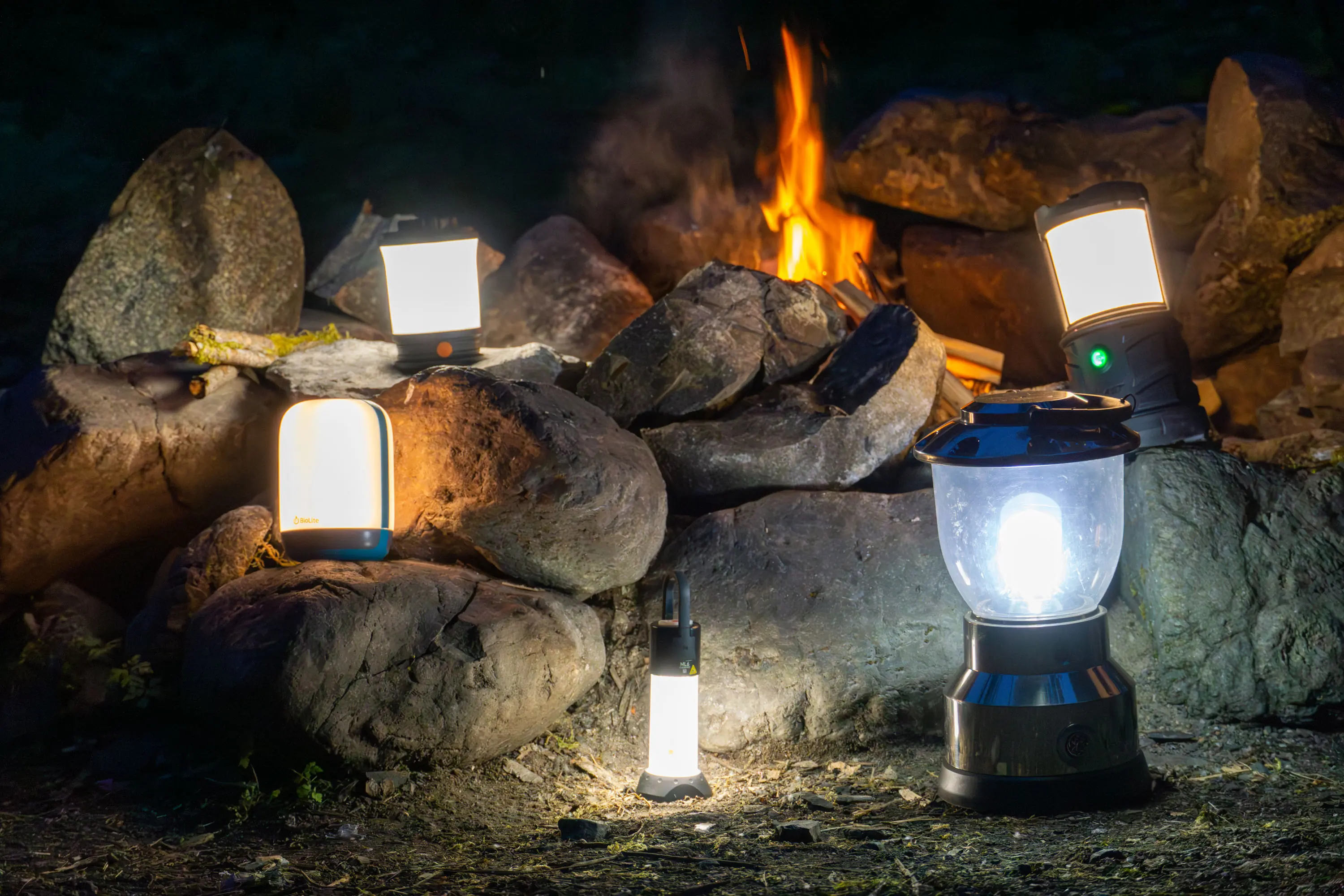

The Best Camping Lanterns of 2025
Whether heading into the backcountry or lighting up the night while car camping, we’ve found the best camping lanterns for every use and budget. Check out our top picks from BioLite, Goal Zero, Fenix, and more.


The Best Flashlights of 2025
We tested the best flashlights for 2024 with options for every budget. Top picks include Fenix, ThruNite, and more!
